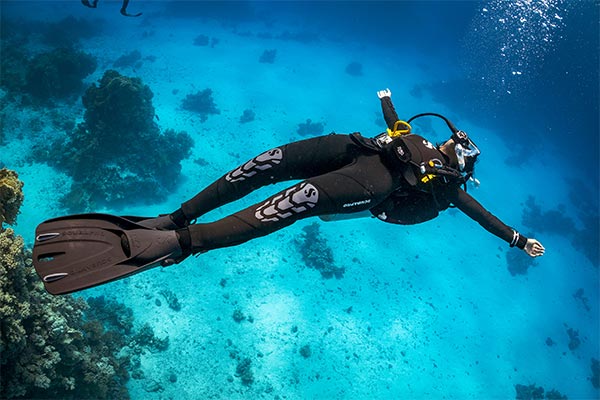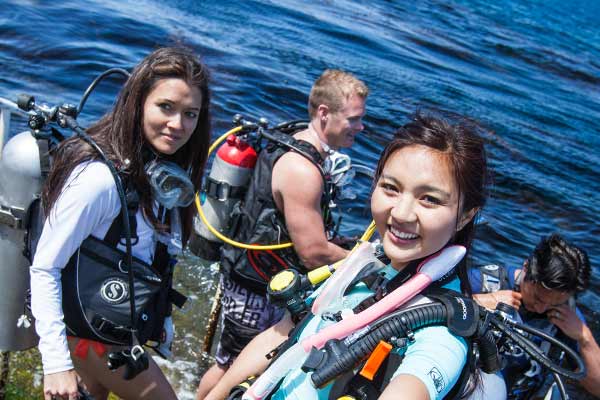Teaching new divers good buoyancy control and proper finning style takes a lot of effort from the instructor. It’s not always easy to give Open Water students the attention that they need, especially if you have a big group.
In 20+ years as a diving instructor, I have taught many Open Water, Advanced and Peak Performance Buoyancy courses. Sometimes I was able to teach my student buoyancy control successfully, sometimes not. I’m not claiming to be a perfect dive instructor, but I think I can give starting dive instructors a few useful tips.
Recognize it
You can kinda guess wich divers need extra attention, even before you go down. Just watch what they do on the surface. Let your students swim a round through the pool, on their backs. The ones who constantly push their knees above the water are probably the ones that will be bicycle-kicking underwater as well. Watch what your students are doing when they are on the surface in deep water with fully inflated BCD. Are they constantly kicking? Even if they have plenty of air in their vest to float? A sign that they may have difficulties learning to hover.
Proper weighting
Divers with proper buoyancy control and finning style, stretch their legs and move from their hips. ‘Bicycle riding style’ swimming under water will push your lower body up. This gives divers the feeling that they are to light and they will ask for extra weights – that we will not give to them off course. Divers with too many weights will constantly move their legs to compensate for sinking. Even if they stay at the same place. It’s easy to damage coral this way and it can become dangerous too. Imagine what can happen if this guy descends to 30 meter deep and finds out he forgot to attach his LPI hose!

Fin pivot and hover
Fin pivot and hovering are great exercises to teach buoyancy control. Students learn to use their BCD in combination with using their breathing, to control their buoyancy. Breath control is important. Some students just get lucky. They manage to ‘gently rise and fall’ without showing ANY control over their breathing. Often, students breath very shallow, meaning they breath out before they properly start rising.
Same thing with hovering. Like many instructors I like to give students not too many weights. Some students just get lucky and manage to float in mid-water for 30 seconds without showing any control over their breathing. I like to see some basic understanding of buoyancy control. Thumbs up – breath in – no bubbles. Thumbs down – breath out – bubbles!
Small tip: I like to tell my students to sink back on their knees after the hovering skill, and only then ask them to empty their BCD. This enforces buoyancy control by breathing, and not by BCD only.
Doing skills neutrally buoyant
Some instructors pride themselves on doing ALL skills neutrally buoyant.
I can understand the reasoning behind this. Teaching buoyancy control takes time and you can not start too early with it. But for many who are taking their first breaths under water, it is difficult enough to learn mask clearing. I don’t want to make it more difficult for them by asking them to do it neutrally buoyant.
Yes, I know… Experienced divers don’t need to sit on their knees to clear their mask. But you teach step by step. After my students have done fin pivot and hover, then maybe they can do some skills neutrally buoyant. Like ‘no mask swim’.
Offering a solution
In my PADI IDC’s I like to do more than getting you through the Instructor Exam. I like giving you tips and tricks on how to teach people scuba diving. Recognizing and teaching buoyance control is one of the subjects we discuss. “You are all experienced divers so I’m sure you can recognize divers who have little buoyancy control. As a divemaster, maybe you had some ‘crap’ divers. But now you are instructors. What are these divers doing wrong, and how can you teach them to improve their buoyancy?”
That question is not so easy to answer. Many factors, like weighting, weight distribution, body positioning and kicking style, breathing control, all influence buoyancy control.
If you want to know more about my IDC’s check out https://asiascubainstructors.com/idc-info/




